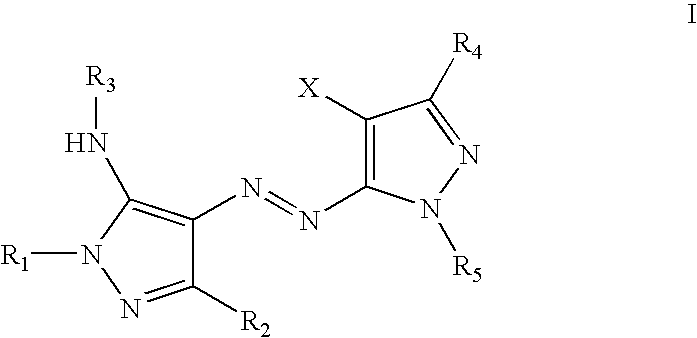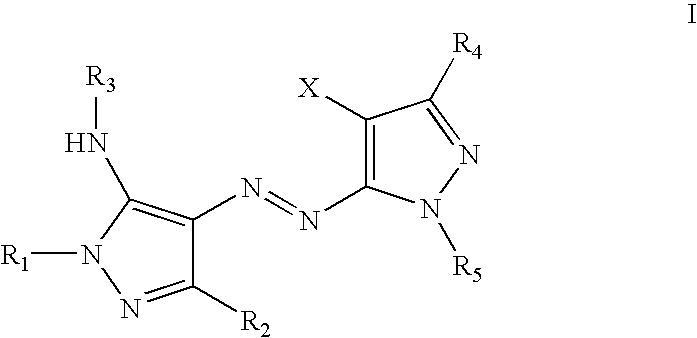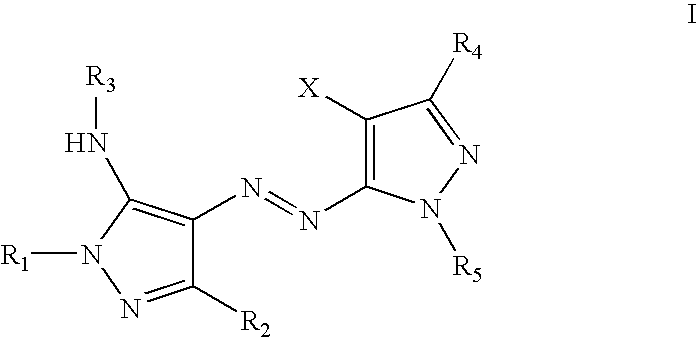Yellow dyes for ink jet inks
a yellow dye and ink jet technology, applied in the field of watersoluble pyrazoleazoaminopyrazole dyes, can solve the problems of insufficient stability to atmospheric ozone, yellow dyes currently in commercial aqueous ink formulations are less than optimal in one property, and difficult to find a dye which possesses all of the above attributes, etc., to achieve good hue, light and ozone fastness, desirable hue
- Summary
- Abstract
- Description
- Claims
- Application Information
AI Technical Summary
Benefits of technology
Problems solved by technology
Method used
Image
Examples
examples
Preparation of Inventive Dye 1
[0052]To 10 g of cold concentrated sulfuric acid was added 0.9 g (0.013 moles) of solid sodium nitrite in portions over a period of ten minutes at 15–30° C. The mixture was then heated at ˜70–380° C. until all solid reacts and dissolves. The mixture was cooled to <15° C. and 10 ml of a mixture of propionic and acetic acids (1:5 ratio) was added. The solution was further cooled to below 5° C. and 5.04 g (0.013 moles) of 1-(2,5-disulfophenyl)-4-cyano-5-aminopyrazole slurried in 15 ml of a 1:5 propionic-acetic acid mixture was added. The thick yellow-brown mixture was stirred for 2 hr at below 5° C. followed by the addition of 50 mg of urea to decompose any residual nitrous acid. The resulting solution of diazonium salt was added to a solution of 2.15 g (0.01 moles) of 1-phenyl-3-(t-butyl)-5-aminopyrazole in 25 ml of methanol. The solution was stirred cold for 2 hr and then diluted with 100 ml of cold water. The pH of the solution was adjusted to ˜8 by the...
PUM
| Property | Measurement | Unit |
|---|---|---|
| weight percent | aaaaa | aaaaa |
| pH | aaaaa | aaaaa |
| humidity | aaaaa | aaaaa |
Abstract
Description
Claims
Application Information
 Login to View More
Login to View More - R&D
- Intellectual Property
- Life Sciences
- Materials
- Tech Scout
- Unparalleled Data Quality
- Higher Quality Content
- 60% Fewer Hallucinations
Browse by: Latest US Patents, China's latest patents, Technical Efficacy Thesaurus, Application Domain, Technology Topic, Popular Technical Reports.
© 2025 PatSnap. All rights reserved.Legal|Privacy policy|Modern Slavery Act Transparency Statement|Sitemap|About US| Contact US: help@patsnap.com



